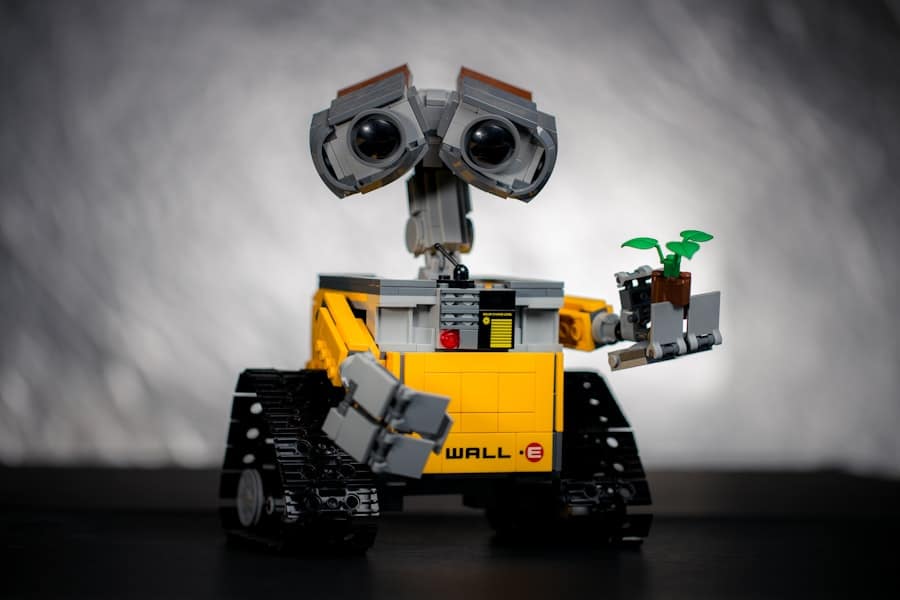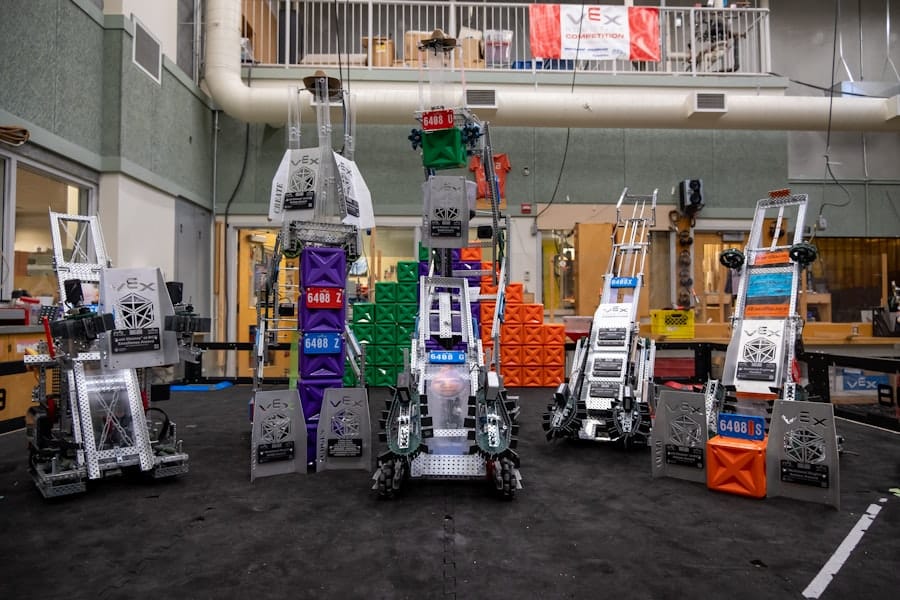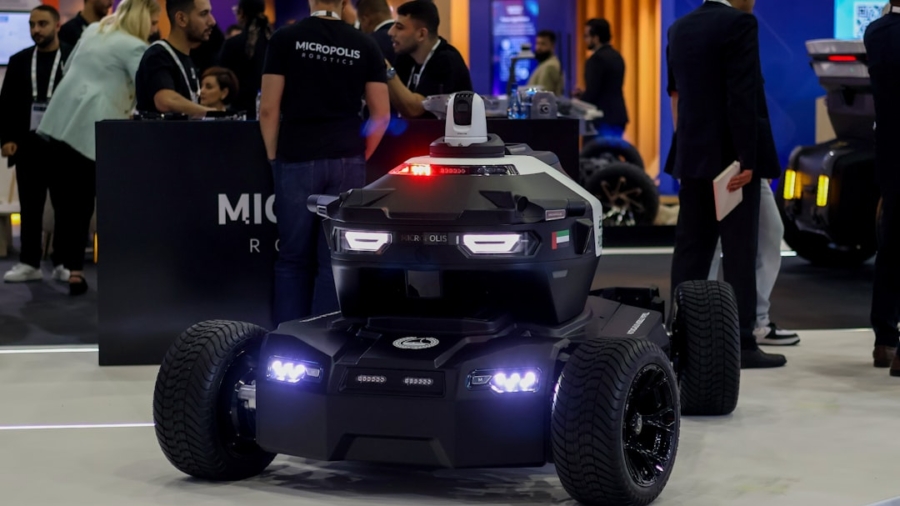The field of robotics has witnessed an unprecedented surge in innovation over the past few years, driven by advancements in technology, artificial intelligence, and machine learning. As robots become increasingly sophisticated, they are being integrated into various sectors, transforming industries and enhancing human capabilities. From autonomous vehicles to robotic surgical systems, the latest innovations in robotics are not only reshaping how we work but also how we live.
This article delves into the latest developments in robotics, exploring their implications across multiple domains, including healthcare, manufacturing, space exploration, agriculture, and consumer applications. The convergence of robotics with other cutting-edge technologies has led to remarkable breakthroughs. For instance, the integration of AI and machine learning algorithms allows robots to learn from their environments and improve their performance over time.
This adaptability is crucial in dynamic settings where robots must respond to unpredictable variables. As we explore the latest innovations in robotics, it becomes evident that these machines are not merely tools; they are evolving into intelligent systems capable of performing complex tasks with precision and efficiency.
Key Takeaways
- Robotics innovations are constantly evolving and impacting various industries, from healthcare to space exploration.
- Artificial intelligence and machine learning are driving advancements in robotics, enabling more sophisticated and autonomous capabilities.
- Robotics is revolutionizing healthcare and medical applications, from surgical robots to exoskeletons for rehabilitation.
- In manufacturing and industrial automation, robotics plays a crucial role in increasing efficiency and productivity.
- Robotics is also making significant contributions to space exploration, aerospace, agriculture, environmental sustainability, and consumer robotics, with emerging trends shaping the future of society.
Advancements in Artificial Intelligence and Machine Learning in Robotics
Artificial intelligence (AI) and machine learning (ML) have become the backbone of modern robotics, enabling machines to process vast amounts of data and make informed decisions. One of the most significant advancements in this area is the development of deep learning algorithms that allow robots to recognize patterns and objects with remarkable accuracy. For example, companies like Boston Dynamics have created robots that can navigate complex environments by using AI to interpret visual data from cameras and sensors.
These robots can identify obstacles, adapt their movements, and even learn from their experiences, making them highly versatile in various applications. Moreover, reinforcement learning has emerged as a powerful technique in robotics. This approach involves training robots through trial and error, allowing them to optimize their actions based on feedback from their environment.
A notable example is OpenAI’s robotic hand, which learned to manipulate objects by practicing thousands of times in a simulated environment before transferring its skills to the real world. Such advancements not only enhance the capabilities of robots but also pave the way for more autonomous systems that can operate independently in unpredictable situations.
Cutting-Edge Robotics in Healthcare and Medical Applications

The healthcare sector has been significantly transformed by robotics innovations, particularly in surgical procedures and patient care. Robotic-assisted surgeries have become increasingly common, allowing surgeons to perform complex operations with enhanced precision and minimal invasiveness. The da Vinci Surgical System is a prime example of this technology, enabling surgeons to control robotic arms equipped with high-definition cameras and specialized instruments.
This system has been shown to reduce recovery times and improve patient outcomes, demonstrating the potential of robotics to revolutionize surgical practices. In addition to surgical applications, robotics is playing a vital role in patient care and rehabilitation. Robotic exoskeletons are being developed to assist individuals with mobility impairments, allowing them to regain independence and improve their quality of life.
Companies like Ekso Bionics have created wearable robotic suits that enable paraplegics to stand and walk again, showcasing the profound impact of robotics on rehabilitation therapies. Furthermore, telepresence robots are facilitating remote consultations between patients and healthcare providers, ensuring access to medical expertise regardless of geographical barriers.
The Role of Robotics in Manufacturing and Industrial Automation
Robotics has long been a cornerstone of manufacturing and industrial automation, but recent innovations have taken this field to new heights. Collaborative robots, or cobots, are designed to work alongside human operators, enhancing productivity while ensuring safety. Unlike traditional industrial robots that operate in isolation behind safety barriers, cobots can interact with humans in shared workspaces.
This collaborative approach allows for greater flexibility in production lines and enables manufacturers to adapt quickly to changing demands. Additionally, advancements in AI-driven analytics are optimizing manufacturing processes by enabling predictive maintenance and quality control.
This proactive approach minimizes downtime and reduces operational costs, demonstrating how robotics can enhance efficiency in manufacturing environments. As industries continue to embrace automation, the integration of robotics will play a crucial role in driving innovation and competitiveness.
Robotics Innovations in Space Exploration and Aerospace
The exploration of outer space has always been a frontier for technological innovation, and robotics is at the forefront of this endeavor. Robotic spacecraft have been instrumental in gathering data about distant planets, moons, and asteroids. NASA’s Perseverance rover, which landed on Mars in February 2021, is equipped with advanced robotic systems that allow it to navigate the Martian terrain autonomously while conducting scientific experiments.
This mission exemplifies how robotics can extend our reach into the cosmos and provide valuable insights into planetary science. Moreover, robotics is playing a pivotal role in the development of space habitats for future human exploration. Concepts like NASA’s Artemis program aim to establish a sustainable presence on the Moon by utilizing robotic systems for construction and resource extraction.
Robots will be tasked with building habitats, mining lunar regolith for materials, and even producing oxygen from lunar resources. These innovations not only enhance our capabilities for space exploration but also lay the groundwork for future missions to Mars and beyond.
The Impact of Robotics in Agriculture and Environmental Sustainability

Agriculture is undergoing a transformation driven by robotics innovations aimed at increasing efficiency and sustainability. Autonomous tractors equipped with GPS technology can plow fields with precision while minimizing soil compaction and fuel consumption. Drones are being utilized for crop monitoring, allowing farmers to assess plant health from above and apply fertilizers or pesticides only where needed.
This targeted approach reduces chemical usage and promotes environmentally friendly practices. Furthermore, robotic systems are being developed for tasks such as planting, harvesting, and weeding. Companies like Harvest CROO Robotics have created automated strawberry pickers that can identify ripe fruit and harvest it without damaging the plants.
As the global population continues to grow, the integration of robotics into agriculture will be essential for meeting food production demands while preserving environmental resources.
Emerging Trends in Consumer Robotics and Personal Assistants
The consumer robotics market is rapidly evolving, with innovations that enhance everyday life through automation and convenience. Personal assistant robots are becoming increasingly popular in households, offering services ranging from cleaning to companionship. Robotic vacuum cleaners like Roomba have revolutionized home cleaning by autonomously navigating spaces while avoiding obstacles.
These devices utilize advanced sensors and AI algorithms to optimize cleaning patterns, making them efficient household helpers. In addition to cleaning robots, there is a growing trend toward social robots designed for interaction with humans. Robots like SoftBank’s Pepper are equipped with facial recognition technology and natural language processing capabilities, allowing them to engage users in conversation and provide companionship.
These social robots are being integrated into various settings, including schools and healthcare facilities, where they can assist with educational tasks or provide emotional support to patients. As consumer robotics continues to advance, the potential for these machines to enhance daily life becomes increasingly apparent.
The Future of Robotics and Its Potential Impact on Society
As we look toward the future of robotics, it is clear that these innovations will have far-reaching implications for society as a whole. The integration of robotics into various sectors promises increased efficiency, improved quality of life, and enhanced capabilities across industries. However, this rapid advancement also raises important questions about ethics, employment displacement, and the need for regulatory frameworks to ensure responsible development.
The potential impact of robotics on society is profound; as machines take on more complex tasks traditionally performed by humans, there will be a need for new skill sets and educational programs to prepare the workforce for this shift. Additionally, as robots become more autonomous, ethical considerations surrounding their use will become increasingly critical. Balancing innovation with responsibility will be essential as we navigate this new era of robotics.
In summary, the latest innovations in robotics are reshaping our world in ways previously thought impossible. From healthcare advancements that save lives to agricultural technologies that promote sustainability, the future holds immense promise for these intelligent machines. As we continue to explore the possibilities of robotics, it is essential to remain mindful of their societal implications while embracing the opportunities they present for enhancing human life.
In the ever-evolving world of technology, the article “Review: Top Robotics Innovations of the Year” highlights groundbreaking advancements that are shaping the future. For those interested in the intersection of technology and style, a related read is the article on Stay Stylish with Wear OS by Google. This piece explores how wearable technology is not only enhancing functionality but also becoming a fashion statement, much like how robotics is revolutionizing various industries with its innovative applications.
FAQs
What are the top robotics innovations of the year?
Some of the top robotics innovations of the year include advanced humanoid robots, autonomous drones, robotic exoskeletons, and AI-powered robotic assistants.
How do these robotics innovations impact various industries?
These robotics innovations have the potential to revolutionize industries such as manufacturing, healthcare, logistics, agriculture, and more by increasing efficiency, productivity, and safety.
What are the key features of these robotics innovations?
Key features of these robotics innovations include advanced sensors, artificial intelligence, machine learning, autonomous navigation, and human-robot collaboration capabilities.
What are the potential benefits of these robotics innovations?
The potential benefits of these robotics innovations include cost savings, improved precision, reduced human error, enhanced safety, and the ability to perform tasks in challenging or hazardous environments.
What are the challenges associated with implementing these robotics innovations?
Challenges associated with implementing these robotics innovations include high initial costs, technical complexity, regulatory hurdles, ethical considerations, and the need for specialized training and maintenance.

